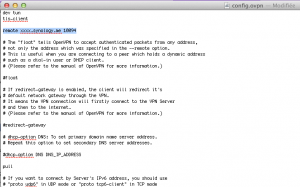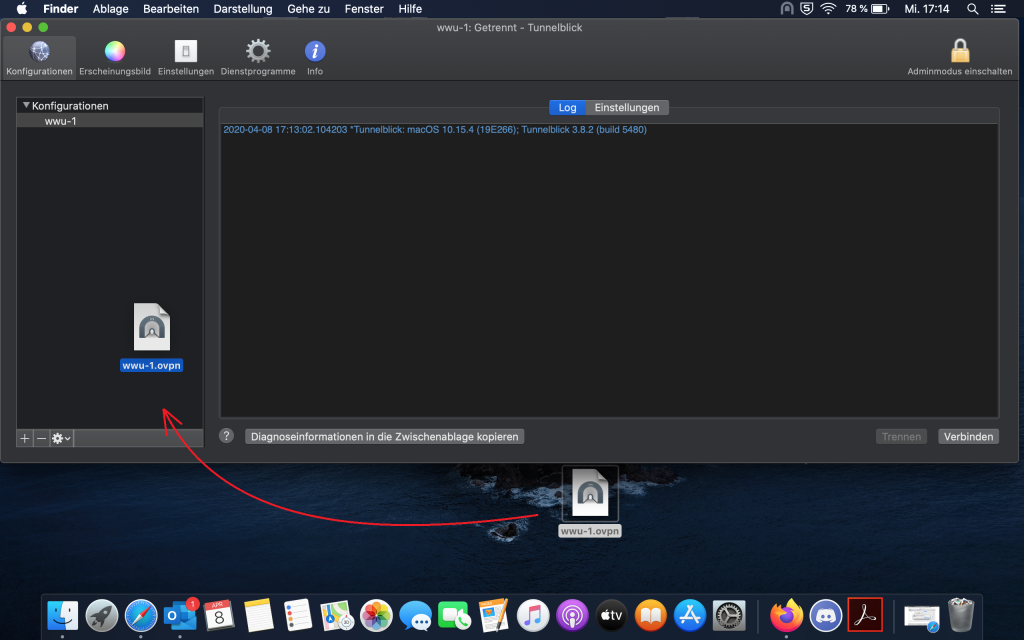

You would need to configure the username and password, or you will be prompted when connecting, with an option to save it to the keychain. That’s pretty much the end of it, nothing else needs to change – the defaults are sensible and the rest of the configuration will be populated from the ovpn file. Synology recommends Tunnelblick but I had some weird issues with it, and instead suggest using Viscosity (this is a non-affiliate link) for both macOS and Windows.
#SYNOLOGY OPENVPN TUNNELBLICK FULL#
Configuring Clientsĭeploy both profiles, and select one or the other depending on whether the full or split tunnel is required. On your gateway and/or firewall allow OpenVPN traffic from WAN to Synology box, and forward port 1194/udp. Now you should have full-tunnel.ovpn and split-tunnel.ovpn. Read through the VPNConfig.ovpn and make changes as directed below:
#SYNOLOGY OPENVPN TUNNELBLICK INSTALL#
This is fairly straightforward – from the Package Manager install OpenVPN server. This breaks a few useful scenarios such as mutual replication but we’ll deal with this later.

OpenVPN seems like an obvious choice – the only downside being Synology can either be VPN Server or VPN Client but not both. VPN Server on Synology Diskstation: Supports PPTP, L2TP, and OpenVPN, with various user authentication options - Radius, LDAP, internal user base (which uses Radius as a backend anyway, as a plugin). Sophos XG firewall: Supports all sorts of IPSEC but can’t terminate VPN connections in the bridge mode, until version 18. PPTP is not serious and L2TP clashes with Back to My Mac ports Unifi USG gateway: Supports PPTP and L2TP with Radius. The following equipment supports Remote access VPN:

Remote access to a home network supporting the choice of split/full tunnel.


 0 kommentar(er)
0 kommentar(er)
